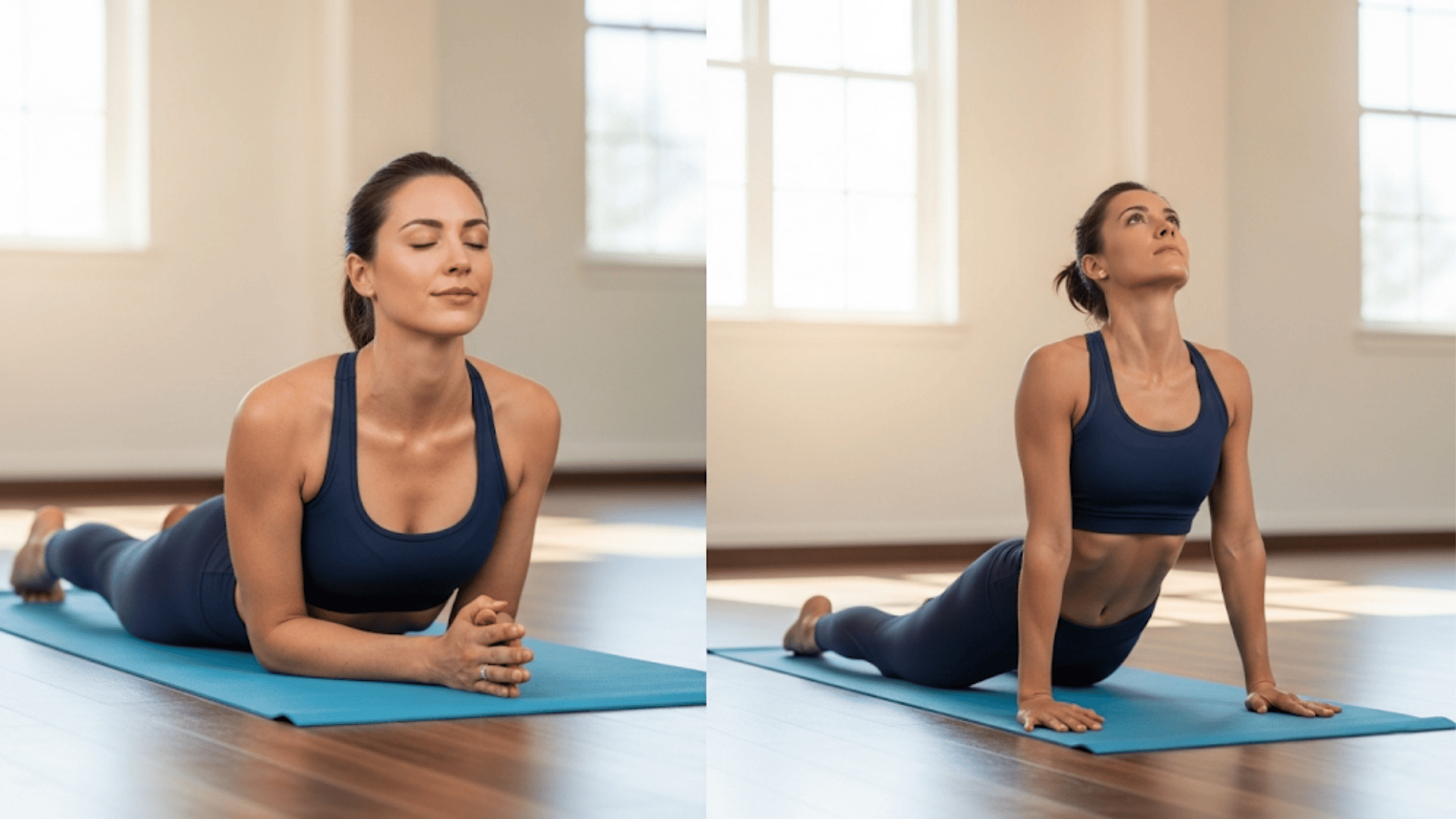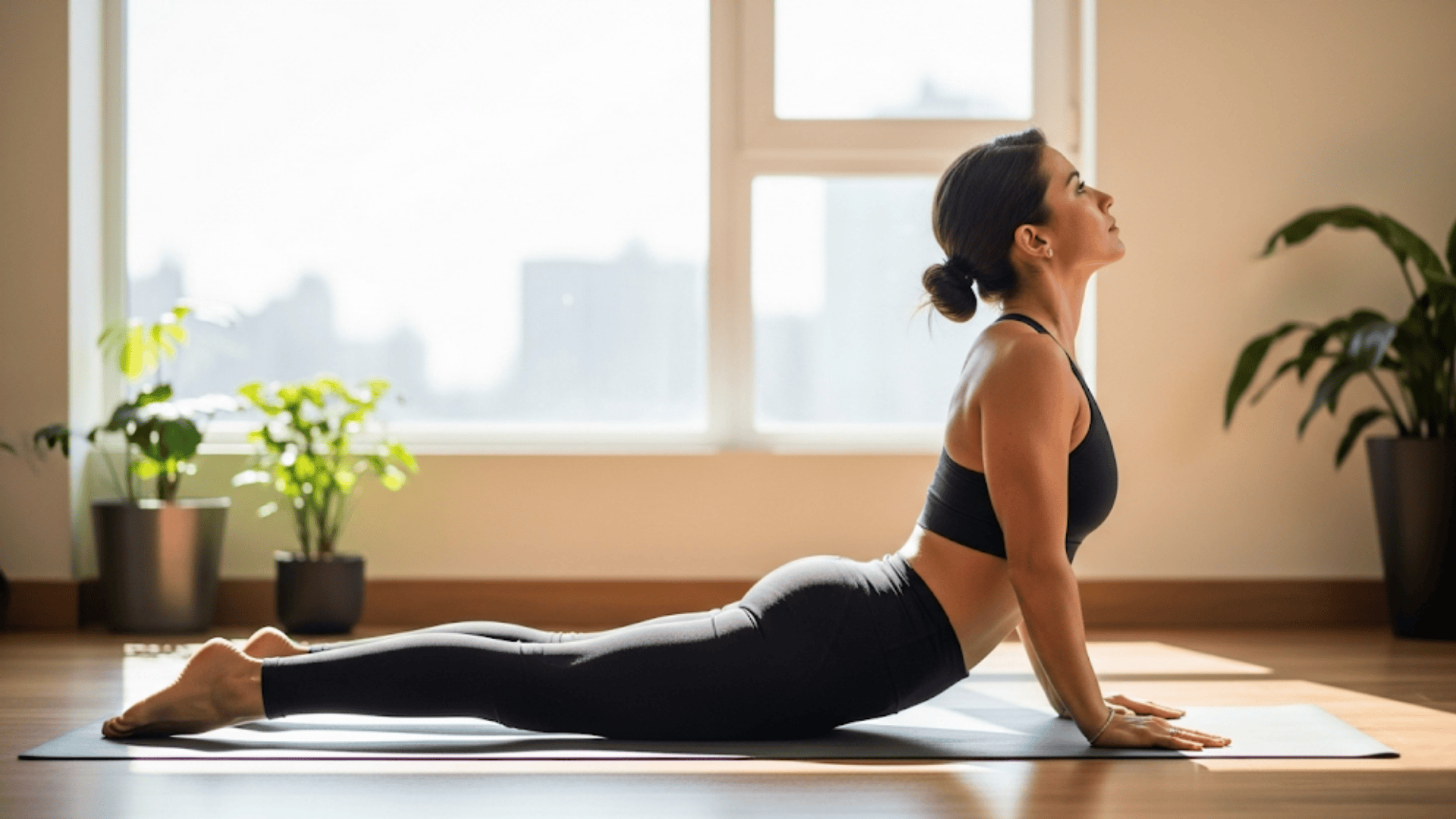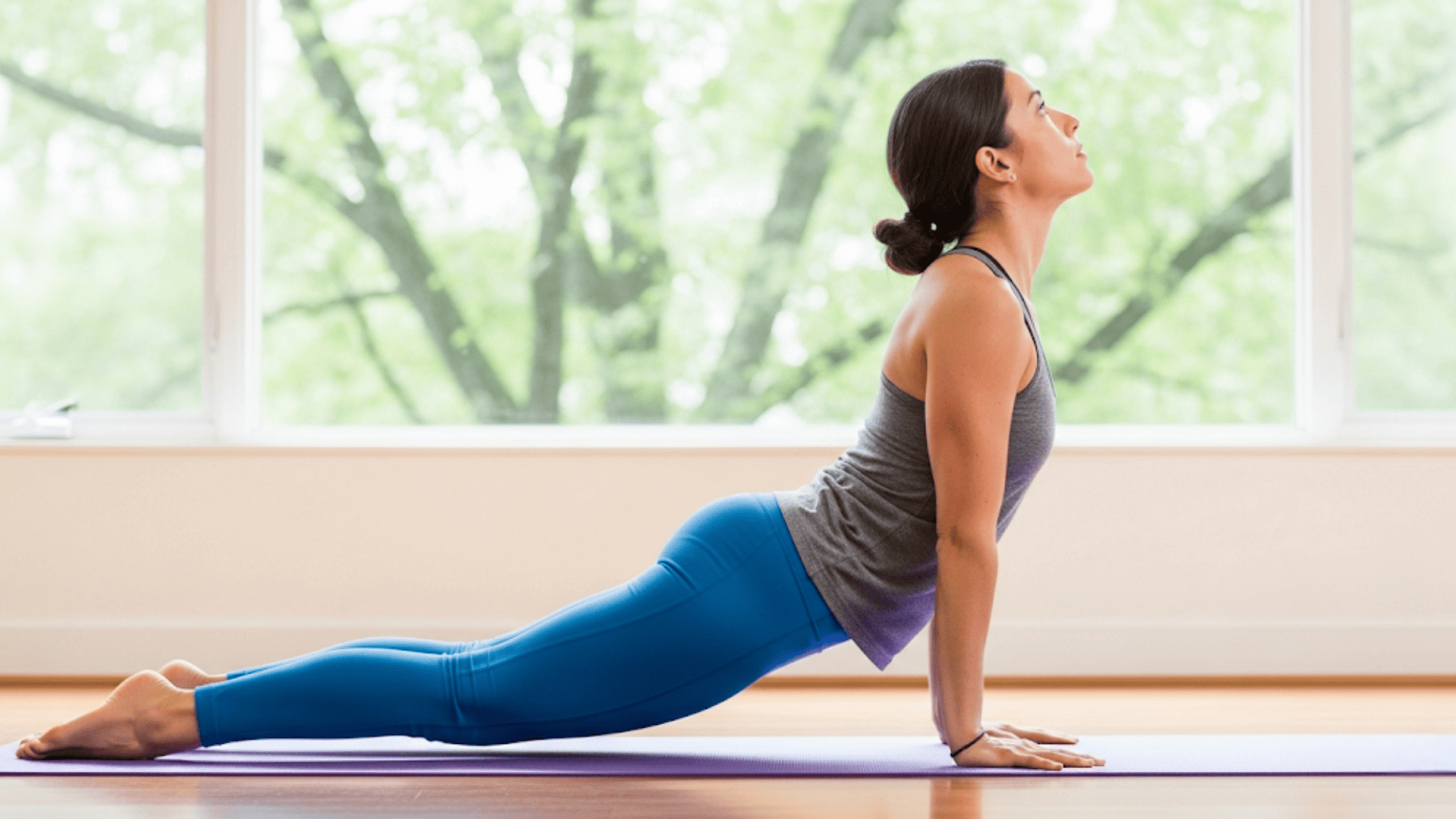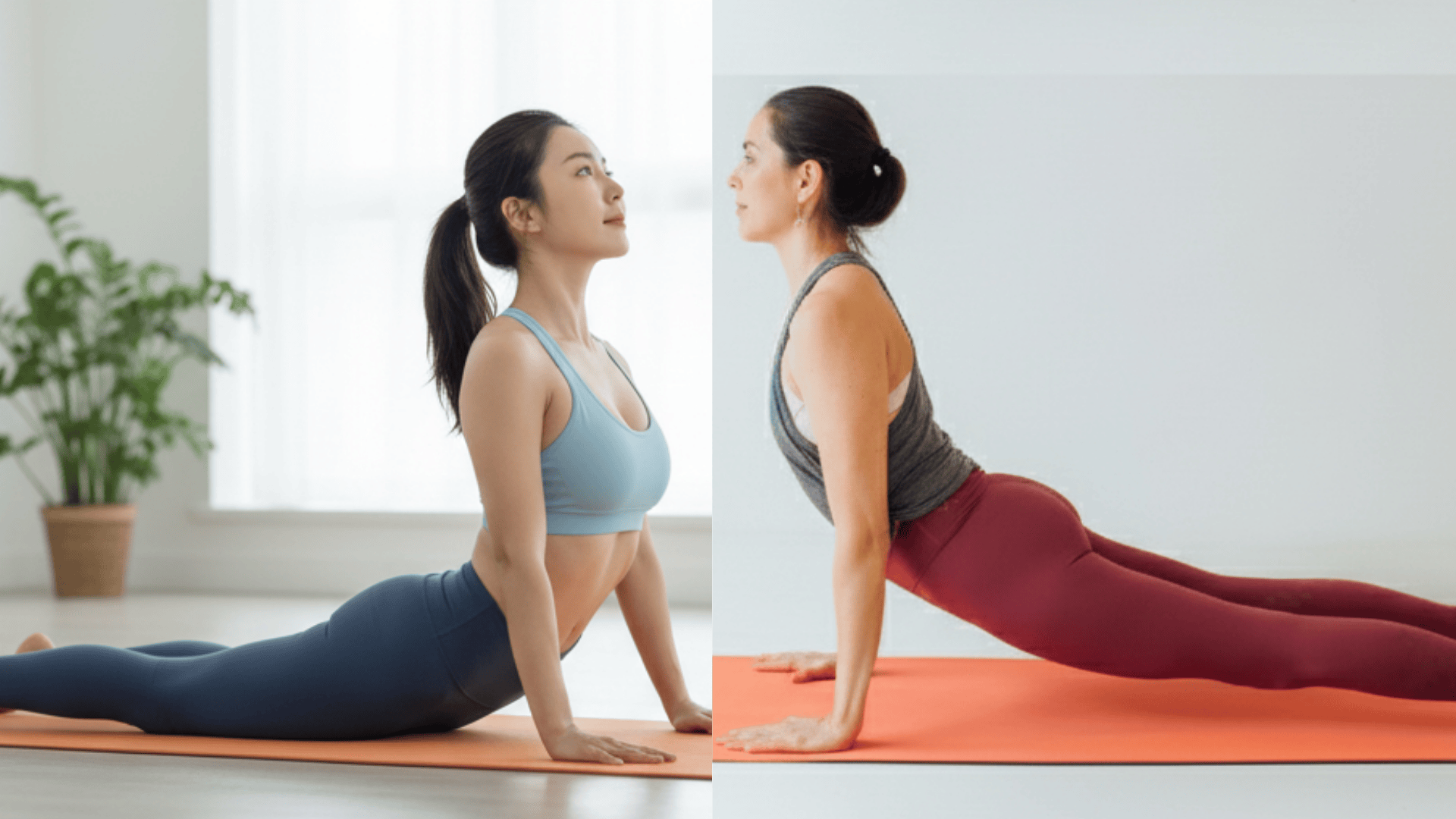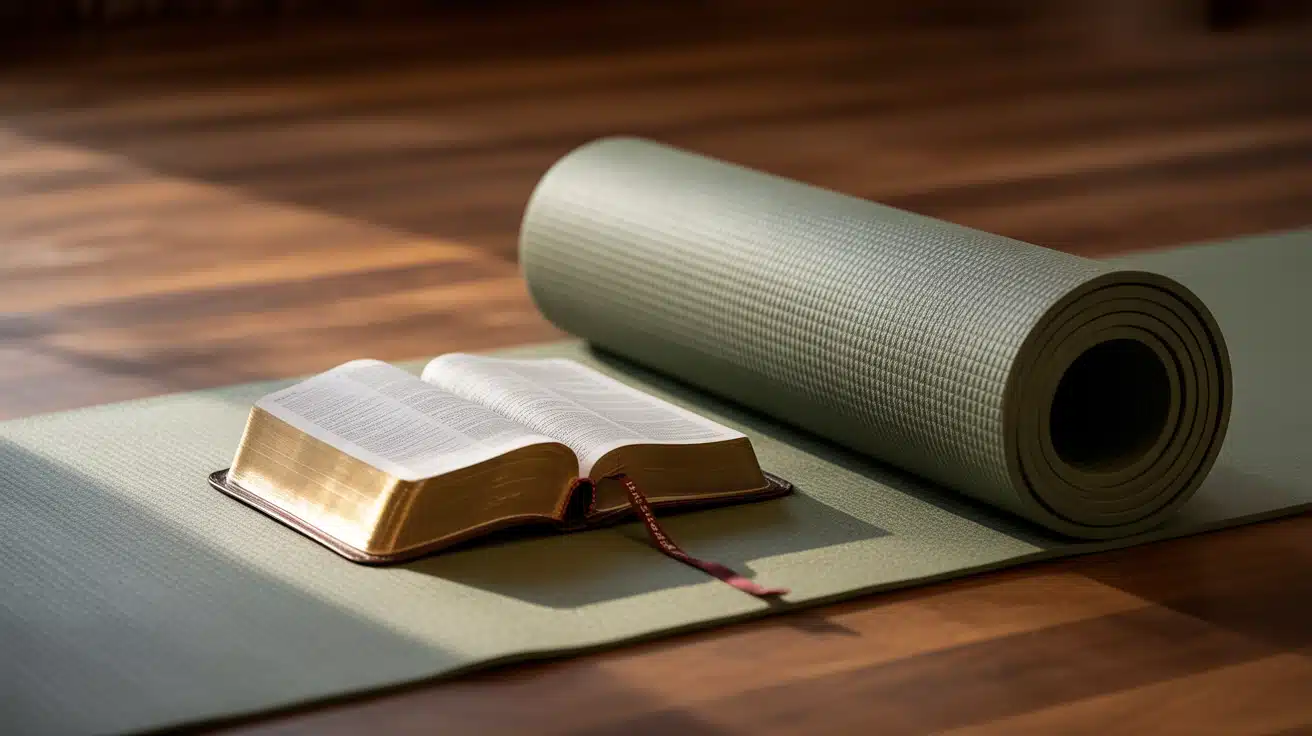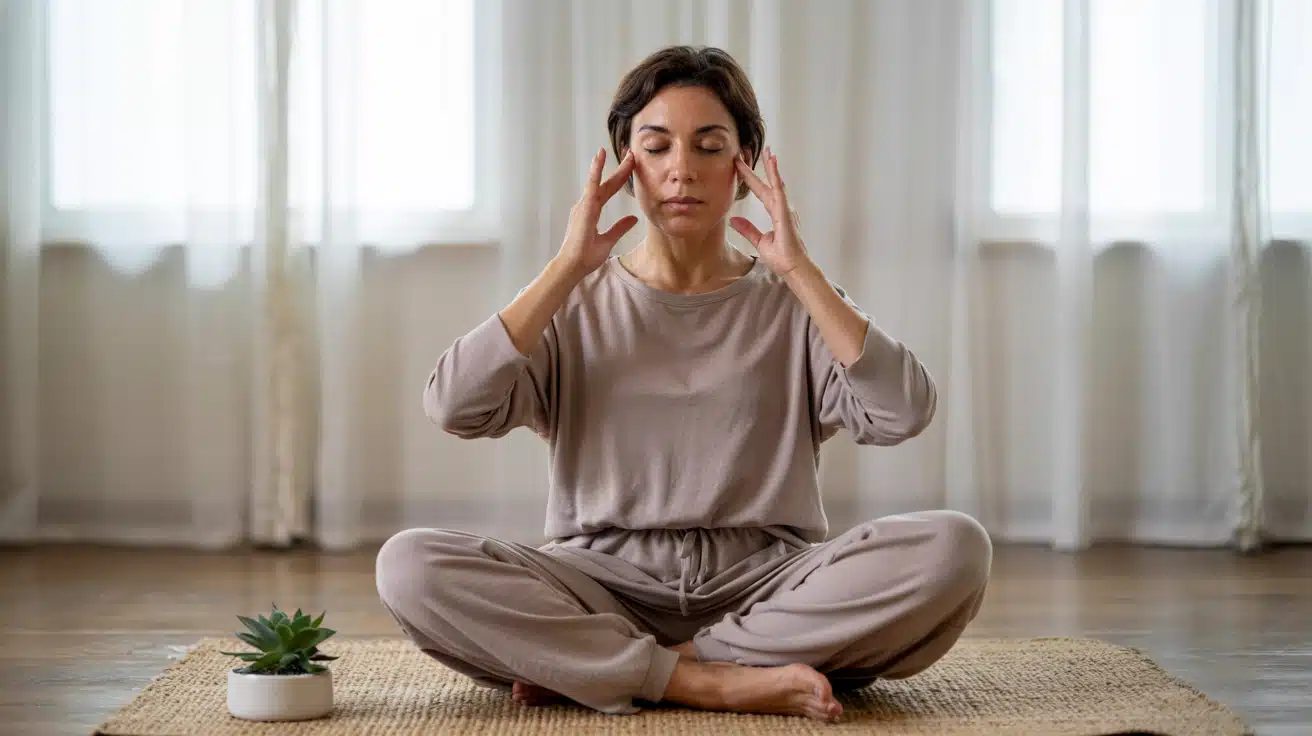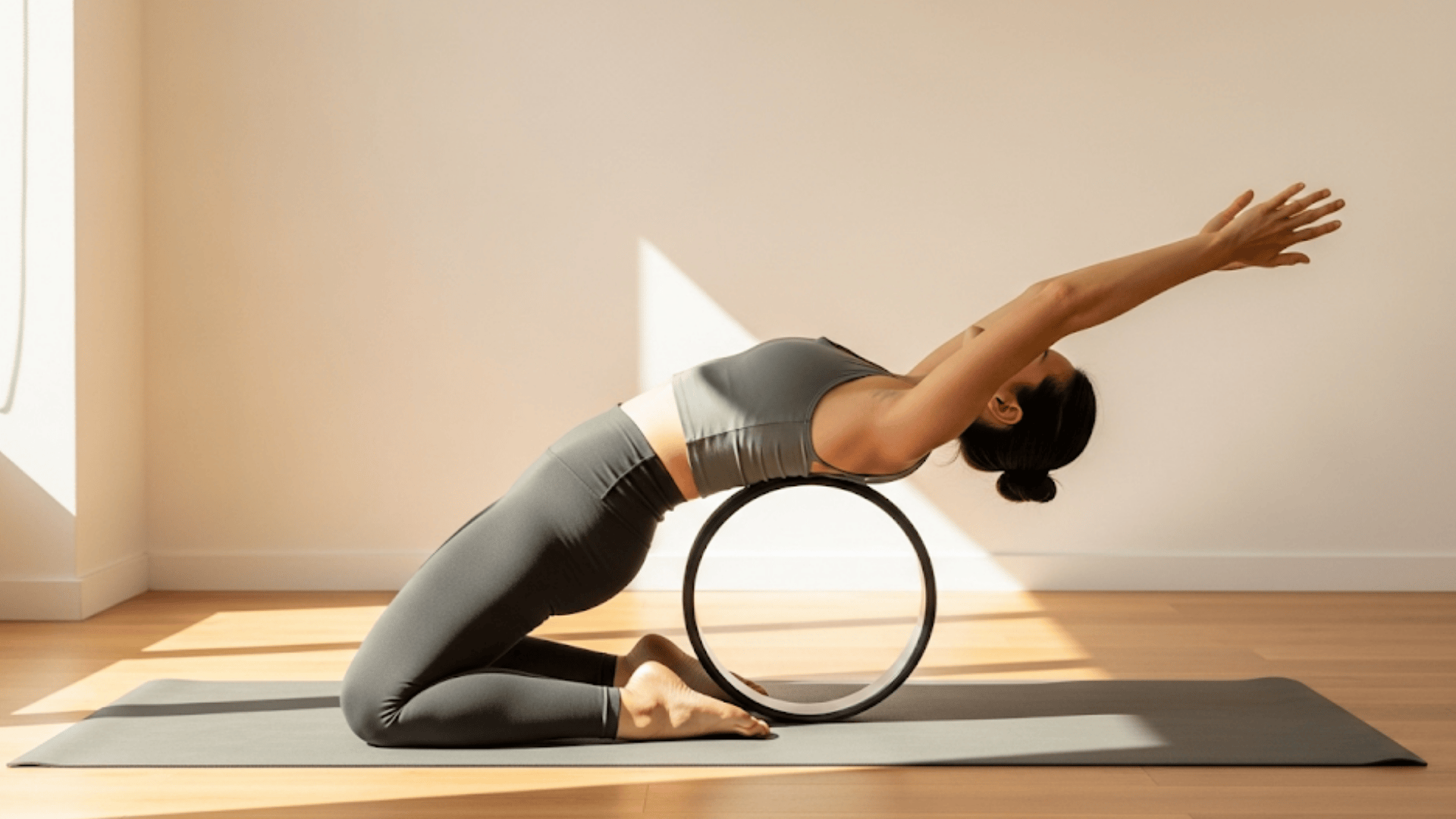Two poses. Same starting position. Completely different results.
Cobra Pose and Upward Dog look similar at first glance, but they work your body in totally different ways. Most yoga students mix them up or choose randomly without understanding what each pose actually does.
This creates problems. Pick the wrong one and you might strain your back or miss the benefits you’re seeking. Choose correctly and you’ll build strength safely while improving flexibility.
The difference comes down to five key factors: how you position your hips, engage your arms, activate muscles, breathe, and handle intensity levels.
What you’ll learn: main differences that matter, specific benefits each provides, plus how to choose the right one for your current skill level and practice goals.
What Is Cobra Pose Exercise (Bhujangasana)?
Cobra Pose yoga is a gentle backbend where you lie face down and lift your chest using your back muscles. Your hips remain pressed against the floor, while your arms provide gentle support.
This pose creates a smooth curve in your spine without forcing deep extension. It’s ideal for beginners who want to rebuild their strength safely.
Cobra Pose Step-by-Step Execution:
- Start Position: Lie face down with forehead on the mat, legs straight behind you
- Hand Placement: Place palms flat under your shoulders, elbows close to your ribs
- Chest Lift: Press the pubic bone down and slowly lift the chest using the back muscles
- Arm Support: Keep elbows bent and use minimal pressure in your palms
- Neck Alignment: Look forward or slightly up, keeping neck long and relaxed
What Is Upward-Facing Dog Yoga (Urdhva Mukha Svanasana)?
Upward-Facing Dog exercise is a strong backbend that lifts your entire torso and thighs off the ground. Your straight arms and engaged legs form a bridge-like shape, with only your hands and feet in contact with the mat.
This pose requires significant strength and opens the chest deeply. It’s commonly used in flowing sequences and builds serious back and arm power.
Upward-Facing Dog Step-by-Step Execution:
- Starting Position: Begin in plank pose or lower from high push-up position
- Hand Placement: Keep palms flat on the ground directly under the shoulders, fingers spread wide
- Leg Activation: Straighten legs completely and lift thighs off the floor
- Arm Extension: Push through hands to straighten arms and open chest forward
- Chest Opening: Roll shoulders back and lift heart toward the ceiling
Cobra vs. Upward Dog Yoga: Key Differences
Although often confused, Cobra Pose and Upward Dog differ in hip placement, arm engagement, and backbend depth, which shape how each pose impacts strength, flexibility, and overall practice.
1. Hip & Leg Placement
In Cobra Pose, your hips and thighs stay firmly pressed against the mat throughout the entire pose. Your legs remain relaxed and passive, providing a stable foundation.
Upward Dog requires you to actively lift your thighs off the ground while keeping your legs straight and strong. This creates a floating effect where only your hands and feet touch the floor.
2. Arm Engagement
Cobra keeps your elbows bent and close to your ribs, using your arms mainly for light support. Your back muscles do most of the lifting work while your arms provide gentle assistance.
Upward Dog demands fully straightened arms that actively push into the ground. Your arms become weight-bearing pillars that support your entire upper body.
3. Backbend Intensity
Cobra creates a gentle, controlled curve that focuses on mobility rather than deep extension. The backbend stays mild and comfortable, making it suitable for daily practice.
Upward Dog produces a much deeper spinal arch that challenges your flexibility limits. This intense backbend requires proper warm-up and should be approached with caution.
4. Muscle Activation
Cobra primarily targets your lower back muscles and spine extensors for strength building. The pose allows other muscle groups to stay relatively relaxed during practice.
Upward Dog activates your entire body simultaneously, as your arms, shoulders, back, core, and legs all work together. This full-body engagement makes it a more demanding and energy-intensive pose.
5. Breath Focus
Cobra encourages slow, steady breathing that supports gentle chest expansion without strain. The breath remains calm, helping you stay present in the mild backbend.
Upward Dog creates an energizing breath pattern that opens your chest powerfully. The intense opening often makes breathing feel more active and invigorating.
Benefits of Cobra Pose
- Gentle Spinal Mobilization Cobra Pose moves each vertebra slowly and safely, helping your spine regain natural flexibility without forcing harsh movements.
- Reduces Stiffness in the Lower Back. Regular practice helps melt away tension from prolonged sitting and aids in releasing tight lower back muscles.
- Prepares Body for Deeper Backbends. This pose builds the foundation strength and flexibility needed before attempting more challenging poses like Wheel or Camel.
- Great for Beginners and Therapeutic Sequence. The accessible nature makes it perfect for new students and those recovering from back injuries or chronic pain.
Benefits of Upward Dog
- Strong Back and Arm Strengthening Upward Dog builds serious muscle power in your entire back chain while creating rock-solid strength in arms and shoulders.
- Opens Chest and Shoulders Deeply. This pose counteracts a hunched posture by stretching tight chest muscles and rolling the shoulders back into proper alignment.
- Energizes the Body, Improves Posture. The intense backbend wakes up your nervous system and trains your spine to maintain healthy curves throughout daily life.
- Builds Stamina and Core Stability. Holding this challenging pose develops endurance while engaging your core muscles to maintain balance and control.
Which Pose Is Right for You?
Choose Cobra Pose if you’re new to yoga, dealing with back sensitivity, or focusing on therapeutic healing.
This gentle option works perfectly for restorative sessions where comfort and gradual progress are most important.
Upward Dog suits intermediate to advanced students who have built sufficient strength and flexibility in their practice.
It’s the go-to choice for energetic vinyasa flows and power sequences that require intensity and full-body engagement.
Listen to your body’s current needs. Begin with Cobra to establish a solid foundation, and then progress to Upward Dog when you feel ready for the challenge.
Conclusion
Both Cobra Pose and Upward Dog serve important roles in your yoga practice, but knowing when to use each one makes all the difference.
Cobra offers gentle spine mobility and builds foundation strength safely. Upward Dog provides intense opening and full-body power development.
Your choice depends on your current abilities and practice goals. Beginners benefit from Cobra’s accessible approach, while experienced students can handle the demands of Upward Dog.
Remember that progress takes time – there’s no rush to move from gentle to intense.
Start where your body feels comfortable today. Build strength gradually. Listen to what your spine needs rather than forcing poses.
Ready to deepen your backbend practice? Try Cobra Pose for one week, focusing on proper form over depth. Share your experience in the comments below.

